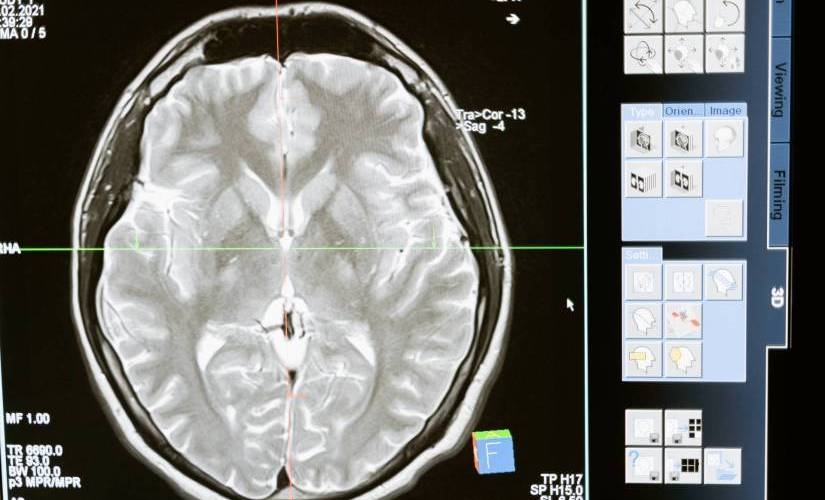Why The Smart Money is Going into Thought Control
Why The Smart Money is Going into Thought Control

It sounds like science fiction but “thought control” — communicating commands from a human brain directly to an external device — is happening here and now. It allows patients with cerebral palsy, spinal cord injuries, or those recovering from a stroke, to move the cursor on a computer screen, manipulate a robotic arm or navigate a wheelchair.
There’s a considerable amount of R&D taking place around these so-called brain-computer interfaces (BCIs) and the ways in which they can allow people to control their environment. Researchers are developing the hardware – electrodes that pick up signals from the brain – they are validating systems for real-world use, and they’re focused on improving the performance of BCIs.
Brain signals control devices
The science behind BCIs is complex, but the quick version is this: electrodes placed on the scalp, on the surface of the cortex or actually within the brain record the signals it produces, then amplify and digitize them. Relevant signals are translated into commands that a connected device can understand.
The primary goal of BCI technology currently is to improve the lives of severely disabled people by allowing them to perform everyday tasks. In the future, they may also aid the performance of surgeons and other medical professionals.
BCIs may sound like cutting-edge science, but it’s been around a while. The first, primitive incarnation was half a century ago. It was more as a proof of concept – playing hands-free pinball than a serious medical endeavor.
Billionaires invest in brain tech
But today BCIs are attracting big bucks from some serious players. Foundations backed by Bill Gates and Jeff Bezos are among those investing $ 75 million in Synchron, which has developed a tiny implantable BCI that spares a patient the need for open brain surgery.
Elon Musk is backing Neuralink’s dream of merging computers with the human brain, using a BCI that allows users to control a computer or mobile device anywhere they go.
And PayPal co-founder Peter Thiel has invested in Blackrock Neurotech, the company behind precision electrode technology that helps people to walk, talk, see, hear, and feel again. Users can type text, email messages, play online games and switch lights on and off with just their thoughts.
But this is only the start. BCIs have the potential to provide almost limitless insights into how our brains function. They’ve already been used to detect the emotions of patients in a vegetative or minimally conscious state.
Treating sleep disorders
They can help treat depression and other diseases through deep stimulation. BCIs can also address sleep disorders and neurological diseases – particularly prevalent among the world’s over-65 population, which is forecast to quadruple in the next 30 years.
Funding for the BCI interface sector is, not surprisingly, increasing. It is set to more than treble by the end of this decade, from $ 1.5 billion in 2021 (with a CAGR of 15.11%) to a forecast $ 5.3 billion by 2030. Government bodies and research institutes are investing heavily in BCIs, and policymakers are supporting new therapies by incentivizing brain research for medical purposes.
But market opportunities go far beyond the world of medicine. There’s phenomenal potential for mind-controlled gadgets in virtual reality gaming (a sector forecast to be worth $ 45 billion by 2027) and in smart home management systems which can open and close doors, manage TV and audio systems, and operate security video cameras.
Super soldiers
Beyond the domestic setting, BCI-controlled robots could help workers operating in hazardous environments, such as coal mines. They could accelerate and simplify interactions between humans and machines across a whole range of industries. They could even be used to turn regular soldiers into “super-soldiers” capable of quick, effective, and intuitive interaction with military equipment.
This is just the start. There are whole worlds to explore that we don’t even know about. Yet. The human brain has around 100 billion neural connections, and we’re only beginning to unlock some of their many secrets now. Advances in AI, machine learning and a new era of quantum computing will partly provide the key.
There are challenges, as there are with every evolving technology. Technically there are still hurdles to overcome: everyone’s brain signals are different and, therefore, hard to measure. Ethically there are issues around consent and unfair advantages, and in terms of security, BCIs could, potentially, be vulnerable to cyberattacks.
More than 500 scientists and engineers at 140 universities, teaching hospitals, and research centers across Europe, are trying to find answers to these and many more BCI questions in one of the world’s largest research projects, The Human Brain Project.
In the private sector the race is on to make direct connections between human brains and electronic devices.
Featured Image Credit: Provided by the Author; Thank you!
The post Why The Smart Money is Going into Thought Control appeared first on ReadWrite.
(6)


